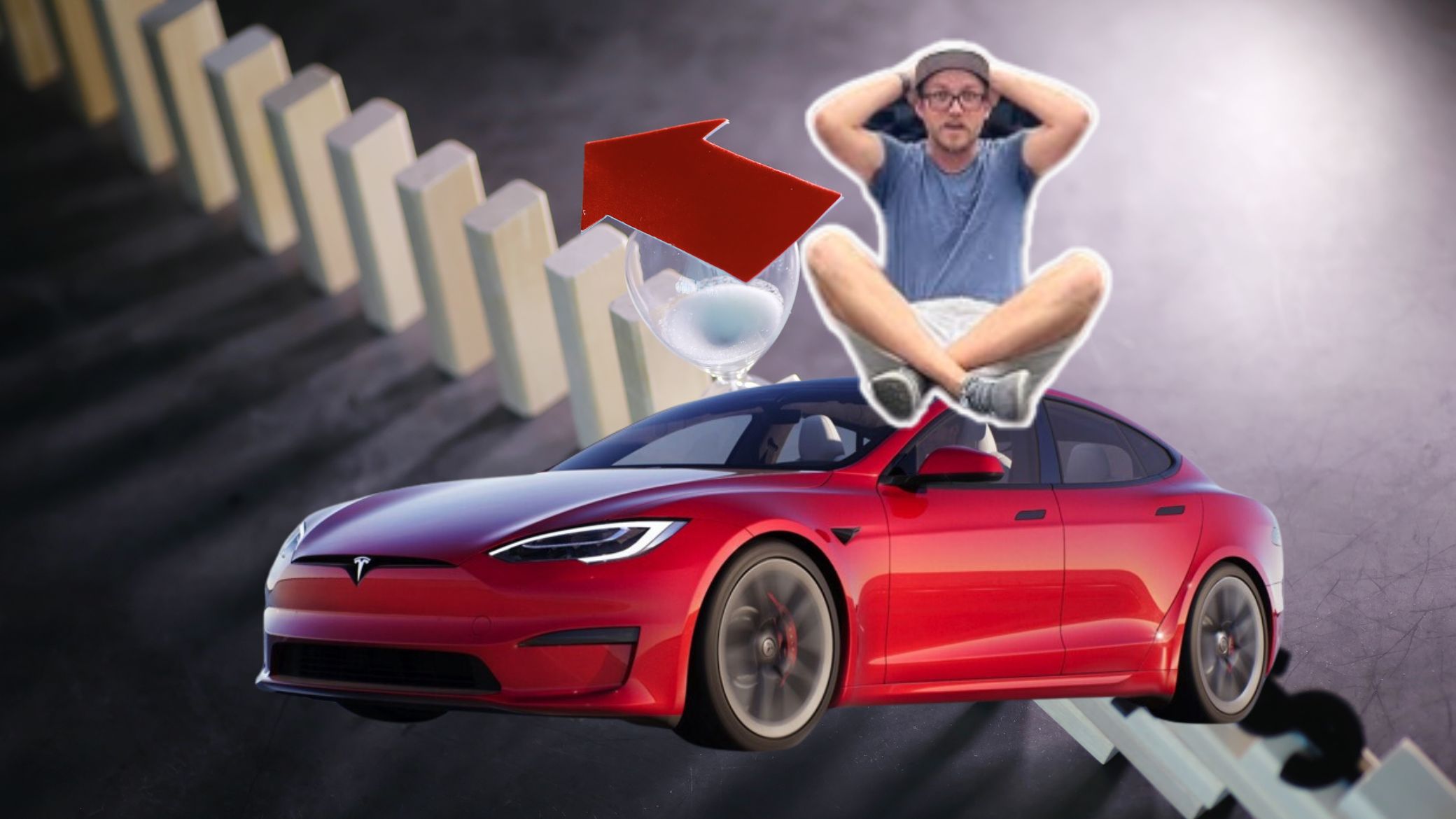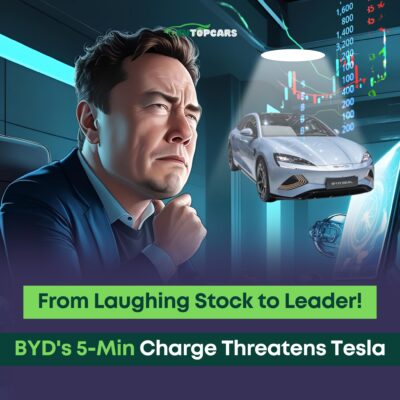The Tesla Model S Plaid, launched with great fanfare in 2022, promised to be a game-changer in the electric vehicle market. With its impressive specs, cutting-edge technology, and the prestige of the Tesla brand, it attracted a lot of attention and significant investment from buyers. However, recent developments have highlighted a dramatic depreciation in the value of this high-end vehicle, raising questions about the factors contributing to this rapid decline and its implications for both current and potential Tesla owners.

The Case of Kyle Conner: A Stark Example
Kyle Conner, the well-known host of the YouTube channel Out Of Spec Reviews, bought his Tesla Model S Plaid for $140,940 in 2022. After just two years and 37,191 miles of ownership, the car’s trade-in value plummeted to a mere $46,600. This represents a staggering depreciation of $94,340—nearly $2.54 per mile driven. Such a dramatic drop in value has sparked intense discussions within the automotive community and among Tesla enthusiasts.
Factors Contributing to the Depreciation
Several factors have contributed to the rapid depreciation of the Tesla Model S Plaid. Understanding these elements can provide valuable insights into the dynamics of the EV market and the challenges faced by high-end electric vehicles.
Tesla’s Continuous Price Cuts
One of the primary reasons for the significant depreciation is Tesla’s aggressive pricing strategy. To boost sales and meet market demands, Tesla has implemented multiple price cuts for its vehicles, including the Model S Plaid. While this strategy helps attract new buyers by making the cars more affordable, it has a detrimental effect on the resale value of existing vehicles. Current owners, like Kyle Conner, find themselves facing substantial losses when it comes time to trade in or sell their cars.
Market Saturation and Competition
The rapid growth of the electric vehicle market has led to increased competition and market saturation. Numerous automakers are now producing high-quality EVs, offering a wide range of choices to consumers. This heightened competition exerts downward pressure on prices, impacting the resale value of early adopters’ vehicles. The Model S Plaid, despite its impressive features, faces stiff competition from other EV manufacturers, which contributes to its depreciation.
Technological Advancements
The fast-paced nature of technological advancements in the EV industry also plays a role in depreciation. Newer models are constantly being introduced with improved features, better performance, and enhanced battery technology. As a result, older models, even those just a couple of years old, quickly become less desirable. This rapid obsolescence is particularly pronounced in the high-end EV segment, where buyers expect the latest and greatest technology.
Perception of Value
Consumer perception of value significantly influences the resale market. Tesla vehicles are often perceived as high-tech and cutting-edge, but the frequent price cuts and rapid introduction of new models can create uncertainty about the long-term value of these cars. Potential buyers may hesitate to invest in a used Tesla if they believe that the car’s value will continue to decline rapidly. This perception further exacerbates depreciation.
The Broader Implications for Tesla Owners
The depreciation of the Tesla Model S Plaid highlights broader issues that affect all Tesla owners and potential buyers. Understanding these implications can help consumers make more informed decisions about purchasing and owning a Tesla vehicle.
Financial Considerations
For many Tesla owners, the rapid depreciation represents a significant financial hit. The initial investment in a high-end EV like the Model S Plaid is substantial, and the prospect of losing a large portion of that investment within a short period can be discouraging. Owners must carefully consider the potential resale value and depreciation rate when deciding to purchase a Tesla, especially if they plan to sell or trade in the vehicle after a few years.
Leasing vs. Buying
Given the rapid depreciation, leasing a Tesla may be a more attractive option for some consumers. Leasing allows drivers to enjoy the benefits of driving a high-tech, high-performance vehicle without bearing the full brunt of depreciation. At the end of the lease term, they can simply return the car and upgrade to a newer model. This approach provides more flexibility and reduces the financial risk associated with rapid depreciation.
Long-Term Ownership
For those who plan to keep their vehicles for an extended period, depreciation may be less of a concern. The value of a car is less relevant if the owner intends to drive it for many years, fully utilizing its lifespan. Long-term ownership can mitigate the impact of depreciation, as the initial investment is spread out over a longer period.
Read more: Tesla Model 3 Six-Year Cost of Ownership: saved $20,000 in fuel costs
Strategies to Mitigate Depreciation
While depreciation is an inherent part of car ownership, there are strategies that Tesla owners can employ to mitigate its effects.
Regular Maintenance and Care
Maintaining the vehicle in excellent condition can help preserve its value. Regular servicing, keeping detailed maintenance records, and addressing any issues promptly can make the car more attractive to potential buyers and increase its resale value.
Upgrading Features
Investing in upgrades and optional features can enhance the car’s appeal and potentially boost its value. Features like Autopilot, Full Self-Driving (FSD) capability, and premium interior packages can make the vehicle stand out in the used car market.
Market Timing
Timing the sale or trade-in of the vehicle can also impact its value. Selling before a new model is released or during periods of high demand can yield a higher resale price. Keeping an eye on market trends and timing the sale strategically can make a significant difference.
Brand Loyalty Programs
Taking advantage of brand loyalty programs and trade-in incentives offered by Tesla can help offset some of the depreciation costs. These programs can provide additional value and make the process of upgrading to a newer model more cost-effective.
Tesla’s Path Forward and EV Industry
The rapid depreciation of the Tesla Model S Plaid underscores the dynamic and evolving nature of the electric vehicle market. As technology continues to advance and competition intensifies, the industry will face new challenges and opportunities.
Technological Innovation
Ongoing technological innovation will remain a driving force in the EV market. Battery technology, autonomous driving capabilities, and connectivity features will continue to improve, shaping consumer preferences and market dynamics. Automakers, including Tesla, must stay ahead of the curve to maintain their competitive edge.
Market Adaptation
The EV market will need to adapt to changing economic conditions, regulatory environments, and consumer demands. Strategies such as price stabilization, targeted marketing, and customer engagement will be crucial in navigating these changes and sustaining growth.
Sustainability and Environmental Impact
As the world shifts towards sustainable transportation, the environmental impact of manufacturing and disposing of EVs will come under greater scrutiny. Automakers will need to address issues related to battery recycling, resource utilization, and carbon footprint reduction to align with global sustainability goals.
Consumer Education
Educating consumers about the benefits and challenges of owning an electric vehicle is essential. Clear communication about factors such as depreciation, total cost of ownership, and technological advancements can help consumers make informed decisions and foster trust in the brand.
Conclusion
The dramatic depreciation of the Tesla Model S Plaid highlights the complexities and challenges of the electric vehicle market. While factors such as continuous price cuts, market saturation, and rapid technological advancements contribute to this decline, there are strategies that Tesla owners can employ to mitigate the impact. By understanding these dynamics and making informed decisions, consumers can navigate the evolving landscape of electric vehicle ownership and enjoy the benefits of driving a Tesla.
Read more: The World’s First Electric Hydrofoil Ferry Pioneering Sustainable Marine Transport









2 Comments
The World's First Electric Hydrofoil Ferry Pioneering Sustainable Marine Transport
VinFast's Global Expansion: Targeting the Philippines as a Key Market